Invented by Gennaro A. Cuomo, Donna N. Dillenberger, Rong Liu, Roman Vaculin, International Business Machines Corp
Blockchain technology is a distributed ledger system that allows for secure and transparent transactions. It is often used in the financial industry to track transactions and prevent fraud. However, blockchain technology can also be used in other industries to track supply chains, manage contracts, and more.
Cognitive automation is the use of artificial intelligence to automate tasks and processes. This technology can be used to improve efficiency, reduce errors, and free up employees to focus on more complex tasks.
The combination of blockchain and cognitive automation creates a powerful tool for managing complex systems. For example, a supply chain management system could use blockchain technology to track products from the manufacturer to the retailer. Cognitive automation could be used to automate the process of tracking and updating the status of each product, reducing the need for manual intervention.
The market for Cognitive Blockchain automation and Management is expected to grow significantly in the coming years. According to a report by MarketsandMarkets, the market for blockchain technology is expected to grow from $3 billion in 2020 to $39.7 billion by 2025. The report also predicts that the market for cognitive automation will grow from $10.7 billion in 2020 to $28.3 billion by 2025.
The growth of this market is being driven by several factors. First, businesses are looking for ways to improve efficiency and reduce costs. Cognitive automation and blockchain technology can help achieve these goals by automating tasks and improving transparency.
Second, there is a growing need for secure and transparent systems. Blockchain technology provides a secure and transparent way to track transactions and manage data. This is particularly important in industries such as finance and healthcare, where data security is critical.
Finally, there is a growing demand for artificial intelligence. As businesses seek to become more data-driven, they are turning to artificial intelligence to help analyze and interpret data. Cognitive automation is a key component of this trend, as it allows businesses to automate tasks and processes that would otherwise require human intervention.
In conclusion, the market for Cognitive Blockchain automation and Management is rapidly growing as businesses seek to improve efficiency, reduce costs, and improve data security. As this technology continues to evolve, it is likely that we will see even more innovative uses for blockchain and cognitive automation in the years to come.
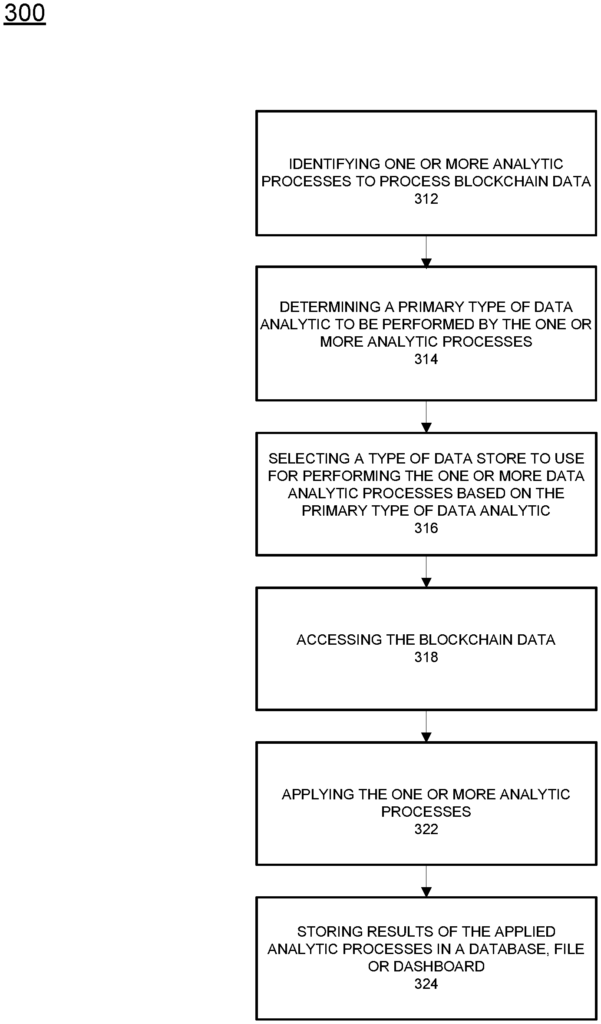
The International Business Machines Corp invention works as follows
A blockchain can be used for many purposes, and interested parties may access it later for ledger verification or information retrieval. A method of operation that may be used in an example includes identifying analytic process to process blockchain data. This can include determining the primary data analytics to be performed, choosing a data store based on this primary data analytical, accessing blockchain data and applying one or multiple analytic processing. The analytic information may be implemented in any way or preference desired.
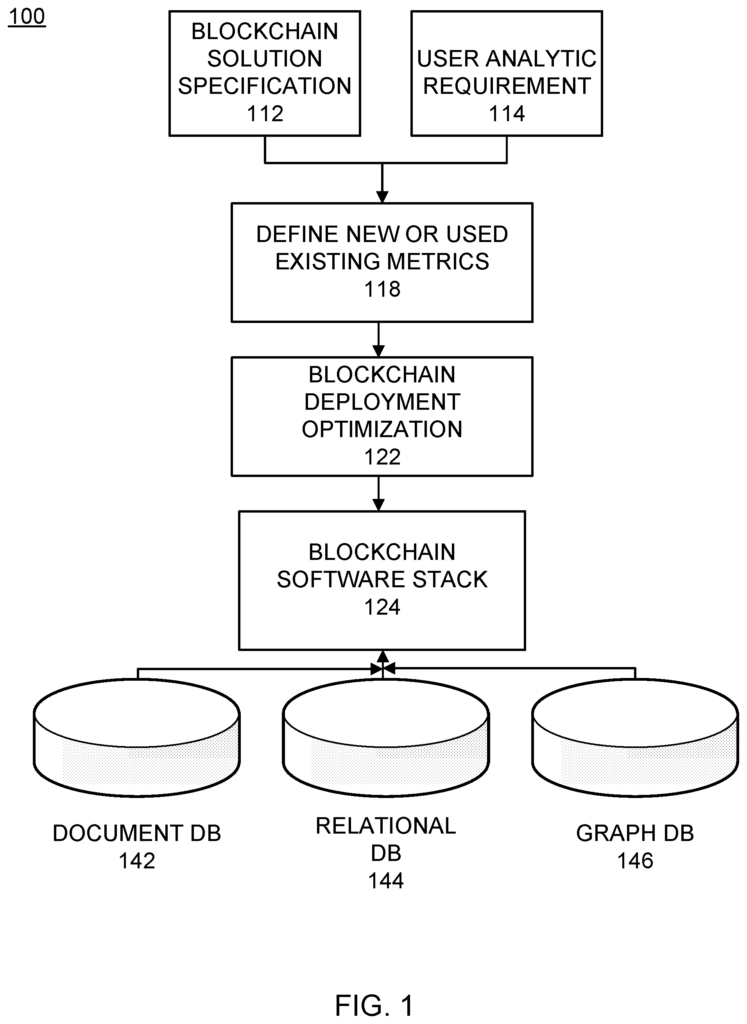
Background for Cognitive Blockchain automation and Management
The blockchain can be used to store any kind of information. The blockchain is a public ledger that can be used to store all types of information, including assets. In its immutable ledger, the blockchain can be used to store any kind of information securely. Decentralized consensus differs from traditional centralized agreements, where one central database would rule on the validity of transactions. Decentralized schemes transfer authority and trust to a network of decentralized nodes and enable them to record transactions in a public “block” continuously and sequentially. creating a unique ?chain? The blockchain is also known as. “Cryptography, using hash codes, secures the authentication of transaction sources and eliminates the need for an intermediary.
It is difficult to create analytics that provide insight for multiple parties, since blockchain is a permissioned, distributed data system designed with strict privacy controls. By examining the data on the blockchain, it is possible to answer questions from interested parties such as how a particular party’s transactions and behavior compares with that of other parties.
Most configurations conventionally are designed to assume data is centralized and has either full or more restrictive permissions. The data can be used to calculate analytics without any restrictions. The majority of analytic methods are data-driven, but blockchain also combines data, smart contracts, participants, and other features. The blockchain has a unique set of characteristics that makes it ideal for creating a “cognitive layer”. As part of curated, timestamped data which is both historical and current. This combination of data can create new challenges in terms of how to expose the data to machine learning, or other processes.
One example of a method of operation could include identifying analytic process to process blockchain data; determining the primary data analytics to be performed by one or two analytics processes; selecting the type of store to use to perform the data analytical processes based on this primary data analysis type; accessing blockchain data and applying one or several analytic procedures, then storing the results in a file, database or dashboard.
The apparatus may also include a processor that is configured to determine one or multiple analytic process types to perform on blockchain data. It can then select the type of store for each of the data analytic process types based on the primary data analytic.
The non-transitory computer-readable storage medium may also include an example embodiment configured to perform the following: identifying one of more analytic process to process blockchain data; determining the primary type data analytic that will be performed by one of more analytic process; selecting a data store type to use to perform the one of more data analytical processes based on primary data analytic type, accessing blockchain data and applying the one of more analytic processing, and storing the results of the analytic applied in a
It will be apparent that the components of the instant invention, as shown in the figures, can be placed in many different ways. The following description of the embodiments, including at least one, of a method and apparatus, non-transitory computing readable medium, and system, as illustrated in the attached figures is not intended limit the scope or claim, but it is representative of select embodiments.
The instant features and structures or characteristics described in this specification can be combined in any way that suits the purposes of one or more embodiments. The usage of phrases like “example embodiments”, “some embodiments”, or similar language throughout this specification indicates that an embodiment could include a specific feature, structure, or characteristic related to the embodiment. The phrases “example embodiments”, “in some embodiments?”, “in other embodiments?”, or any other similar language throughout this specification don’t necessarily refer to the same group. Furthermore, the features, structures, and characteristics described in this specification may be combined in any way that suits the needs of one or more embodiments.
In addition, the term’message’ may be used in the description of embodiments. While the term?message? may have been used to describe embodiments, the application can be applied to any type of network data such as packet, frame, or datagram. The term “message” can also be used. The term “message” can also refer to packet, frame, or datagram. While certain types of signals and messages may be shown in certain embodiments, they are not limited by a particular type of message and the application does not limit itself to that type of signaling.
Example embodiments” provide a blockchain, and a network of registered peers or peer devices that can be a part of a private consortium. The enrolled/registered members of the blockchain consortium can provide/share/change/upload/download analytics to all enrolled members of the consortium in various ways. As an example, built-in analytics such as aggregated metrics can be shared with all members, without disclosing any information about specific parties. A common commodity, or a well-known product or service can be analyzed to obtain an average price. Government agencies could easily access such information for mapping integrity. The Federal Trade Commission (FTC), for example, may be concerned about unfair business practices and price-fixing products to address antitrust concerns. Dates, times, amounts, etc. of a sold product can be quickly determined and mapped in order to identify anomalies that may lead to suspect candidates. Through explicit permission control, custom analytics can be obtained across multiple parties to the blockchain. For example, comparing your own product price with those of other users to create a graph of relevant data.
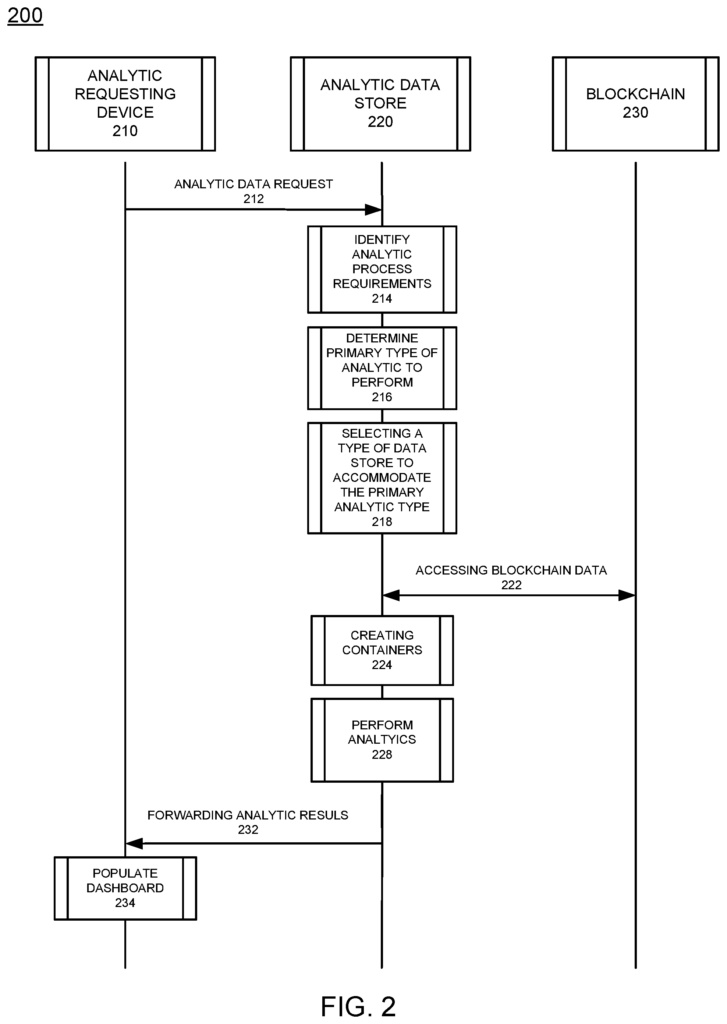
In this configuration, a blockchain and its network of peers or members may be assigned to a?consortium’. Or membership group, which embodies such members as privileged party who can access data from their own and others’ data according to their privilege status. This configuration allows for analytics to be provided across all parties, with explicit permission controls. The metrics that a user needs to analyze may come from different types of data. The analytics can be displayed on a dashboard that is customized to meet the user’s preferences, account preferences, or pre-determined criteria.
Example embodiments can also provide a trusted database, such as blockchain, with internalized or customized configuration type built in analytics, and explicit ‘analytics levels? Permission control (e.g. privacy-preserving access). Analyses of aggregated behavior can be shared with parties enrolled to the blockchain for analytic and analytical purposes. The analytics can be designed to look like a ‘transaction. Parties can request permission-controlled data. In general, the blockchain may provide a pool of timestamped data, current and historical state data and ledger data, cross-partner/cross-organizational data, a log of processes, strong identities, and the data is already agreed upon and trusted data that does not require verification. According to example embodiments the analytic data method provides a mechanism for automatically generating customized analytics that are based on blockchain specifications and leveraged.
FIG. According to an example embodiment, FIG. 1 shows a logic model of a multiprocess blockchain analytics data model. Referring to FIG. The configuration 100 contains a process that combines a blockchain solution specifications 112 with an analytic user requirement 114 in order to produce analytical data. This approach may require that the request for analytical data be accompanied by a confirmation of permissions to mine data and produce intelligible outcomes. 118. New metrics and used metrics can be defined. A metric specification, used to process data by topic or parameter, may also be created. On the basis of index data and data from various sources, query and aggregate metrics and other metrics can be produced. Data from the blockchain or external data can be used as a databank for querying. Built-in analytics or custom analytic library can be stored within a blockchain configuration, and then retrieved and processed when a data request is received. The result is notifications, display/visualization data, and other analytic information that can be sent to a dashboard for the user.
The metrics defined can be used to determine the blockchain software stack to use, if at all, and what data bank to implement in order to perform analytic processes. If the analysis is mainly graphs, documents or files, the data store that best suits the process can be chosen and used. If documents were needed for reference, then a document DB 142 could be set up. If the database requirements require a relational DB, then the relational DB 144 can be used to perform data analytics. If the data analytic process requires various graphs then the graph DB 146 can be set up and used to store analytic processes, and blockchain data. The type of database chosen for a particular file type (e.g. data files or graph files) may be correlated to the most likely file types to be used in data analytics. There are rules that the blockchain runtime uses to match the datastore with the analytics. If, for example, “identity analytics” are requested then a graph DB will be used. If?identity analytics? If “classification analytics” are required, then a?SPARK? If?classification analytics? DBs such as?SPARK? “Furthermore, performance data is collected to determine how well the analytics perform, including memory, CPU, and other computing performance concerns. This performance information will be used for selecting a datastore.
In FIG. The system configuration in Figure 1 is integrated with the blockchain runtime. It includes automatically-generated data connectors, data retrieval and querying mechanisms, analytical modules and customizable dashboards. The privileged grant of access may restrict access to certain analytics in order to meet privacy concerns or preferences of the parties involved. As an example, a participant in a blockchain may only be willing to provide data for aggregate time series analytics, such as aggregated data by type of product or hour. For a specific timeframe, e.g. last 24 hours, seven days, thirty days, etc .,),, a blockchain participant may be willing to offer data for only aggregate level time series analytics (e.g. aggregated by hour, type of product, etc.). To avoid security violations, the transaction data can be parsed according to the security requirements. Raw data will be extracted from transactions. Participants in the blockchain consortium might not want to share their data with any predictive modeling or clustering purposes. The user can restrict access to data according to the consortium rules as well as their user preferences.
User analytics requirements are defined as metrics based on a blockchain specification, including an asset data structure, smart contracts/transaction types, parties, and a security model which fully observes analytics level permissions. The attributes needed to calculate metrics are stored in external data sources or the blockchain. The data that is indexed may be the data which participants have agreed to share for certain types of analytics requested by other members or certified third parties. The indexed data is analyzed using parameterized queries to calculate metrics for display. Some built-in features for blockchain analytics include counting transactions, summation of asset values, time-series analysis of transaction(s), detection of anomalies, etc.
A configurable dashboard can be used to display metrics using various styles, including but not restricted to pie, line or map. A blockchain configuration can contain data elements such as smart contracts, asset data models, parties with strong identifiers, a security/permissions model, and time-stamped data about records and processes. Analytics can be defined by a specification such as time series/trending analyses for data that has a timestamp, e.g. transactions, asset updates etc. In one example, the goal may be to identify an asset/transaction patterns, anomalies, and patterns regarding how assets/updates are done through transactions. This could include intervals, frequency, parties, etc. Other analytic considerations may include anomalies compared to established patterns or common behaviors among parties, as well as individual behaviors in comparison with other parties, including a ranking of a party based on some asset value (i.e. cheapest product), the transaction volume, etc.
Built in metrics that do not reveal information about specific parties. The blockchain network configuration is able to compute and store these metrics in a data base. Permissioned users can access the metrics via query transactions. Smart contracts are created for metrics that involve specific parties and an approval is then obtained from all parties. Blockchain application creation tools such as a fabric composer can generate smart contract creation and blockchain data approval. Data with timestamps allow for a time-series analysis such as seasonality patterns, anomaly detection and forecasting. Since all historical data (i.e. ?ledger?) Once committed to the blockchain analytics computed using such data are authoritative and can trusted. As an example, the user’s set of goals may be used to identify metrics. In the excel table each metric has been further broken down into attributes. When a metric is provisioned by built-in analytics (e.g. analytics engine), the data attributes will be retrieved by blockchain components. The data is retrieved by following the smart contract invoke procedure if the metric could only be accessed through a smartcontract. A query can be an API, or a program which is told to perform a calculation. If a party wants to know the average freight costs in a certain region, they can use parameters like:
{\ndataindex: ? shipment_freightcost_region? (attributes needed for this\nmetric have been indexed, or collected),\nstartdate: [2017, 2, 1],\nendend: [2017, 3, 1]\nreduce_fun: reduce_avg\n}.
In this example, the API will receive the query statement above, retrieve data from the “dataindex”, apply a date-range filter, and finally, apply the “reduce_fun” function. The function can be user-defined or predefined. Dates, variables and other parameters can be defined to determine an average of all available freight costs. The analytics may include a numerical indicator next to a standard industry measure on a graph, so that the deviation amount can be easily identified and shared. Auto-complete would be one way to automate a notification. If, for example, a vice-president of operations wants to know when the company’s costs exceed the standard industry cost by more than 10%, analytics can be generated, and then compared with the threshold percentage (0.10). If the threshold is exceeded, (more than 0.1%), a notification could be sent out to all parties interested so that manual changes to the supply chain are made based on automated information.
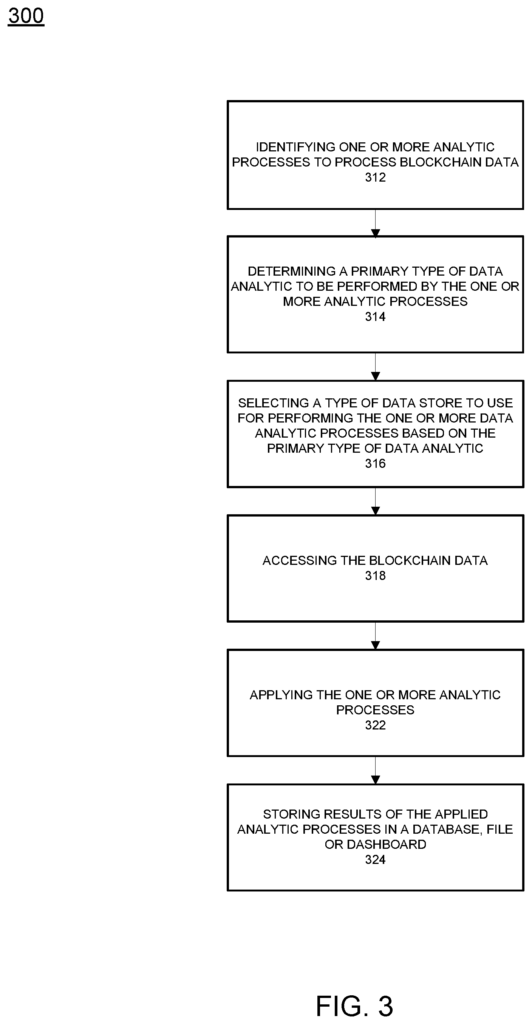
An example of metric configuration can be defined as the freight cost per shipment for each country over a period of 30 days. A second concern could be the ranking of the company in relation to the average freight costs per shipment for all carriers within a given geography over a 30-day period. Each metric can be defined as a “key,value” pair. The key and value are a composite, with a mapping metric (key and value) pair that maps to attributes. This may define a data specification key/value/filter. The key/value/filter defines how data will be retrieved from blockchain data. A determination can be made about the permission construct. This could include a built in analytics model or a smart contract for the blockchain. In the case where the permission construct consists of a “built-in analytics”, a query with the appropriate parameters is used to retrieve the metrics. Q1 will, for example, not reveal any party-specific information (i.e. no business names). This metric is calculated and stored on the blockchain to allow the enrolled party query. The general “query” can be invoked by any party. Smart contract parameters are required to retrieve analytics. The metric calculation may be done by?reduce_avg’. “Count the first component of the value for each key. Add the second component to the value. Divide the sum by the number in order to get the average.
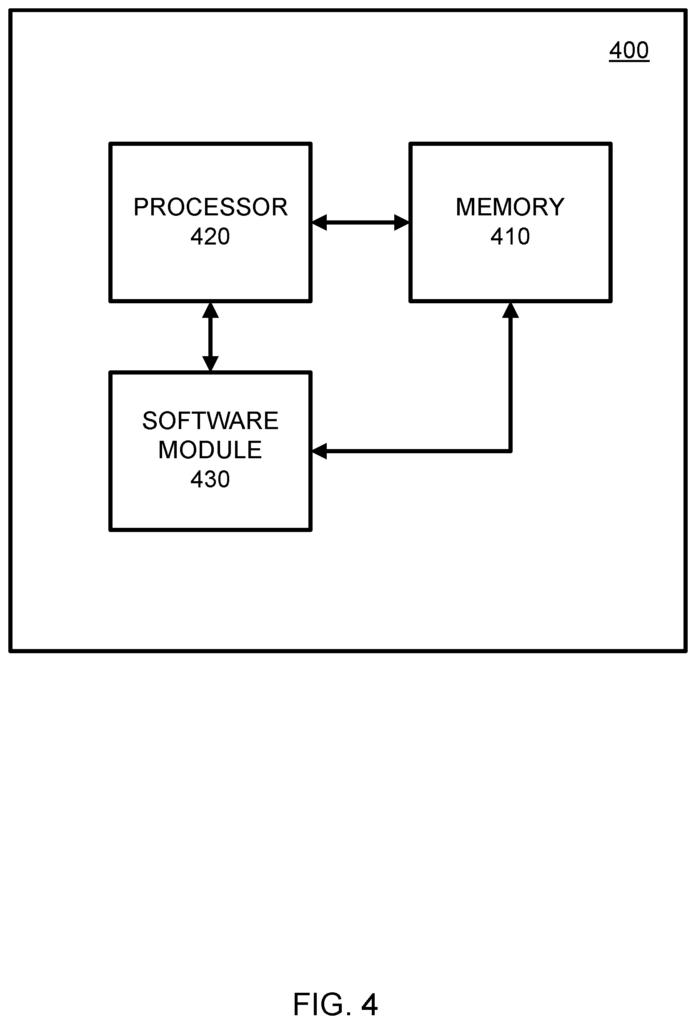
Click here to view the patent on Google Patents.
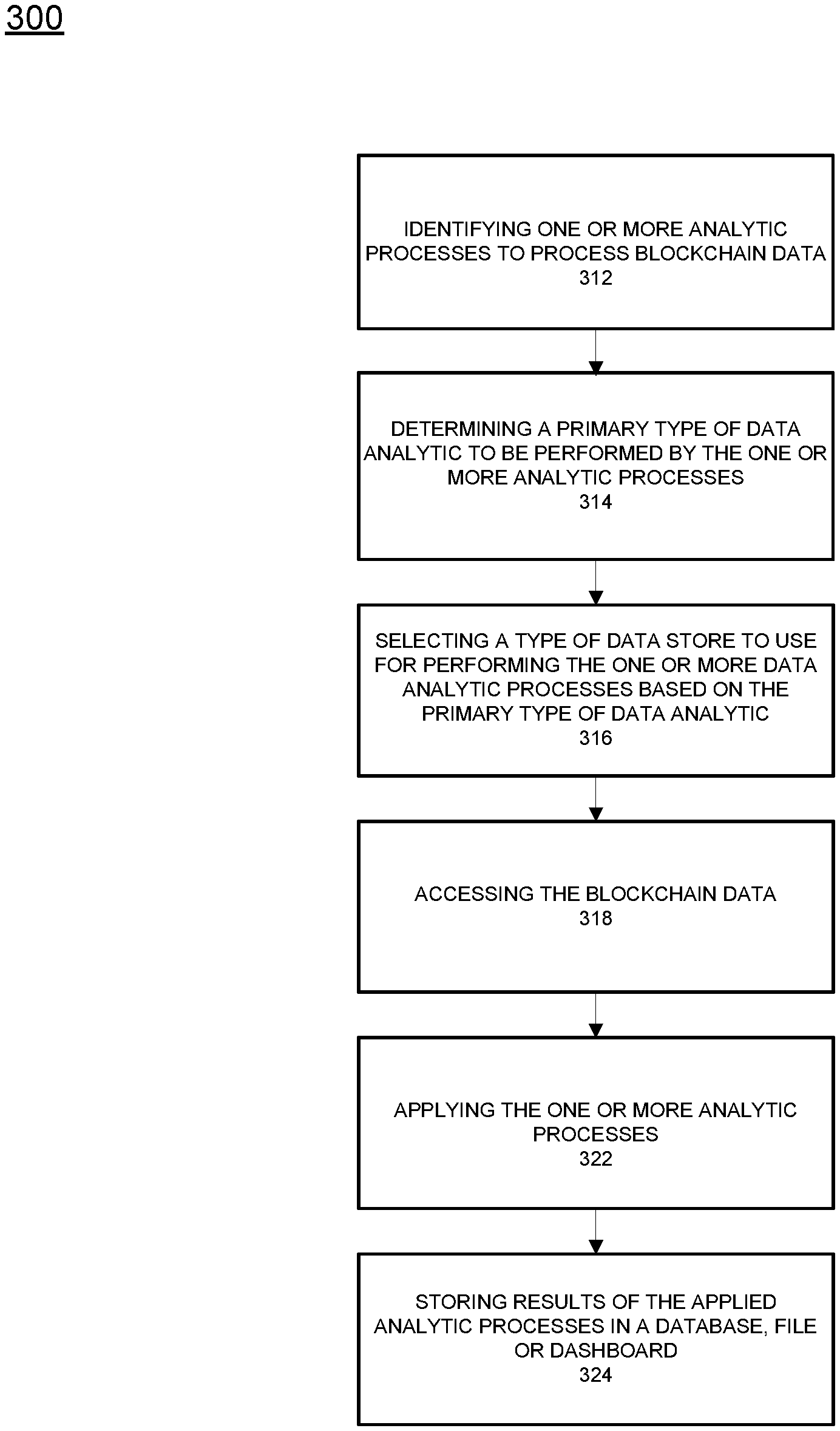
Leave a Reply